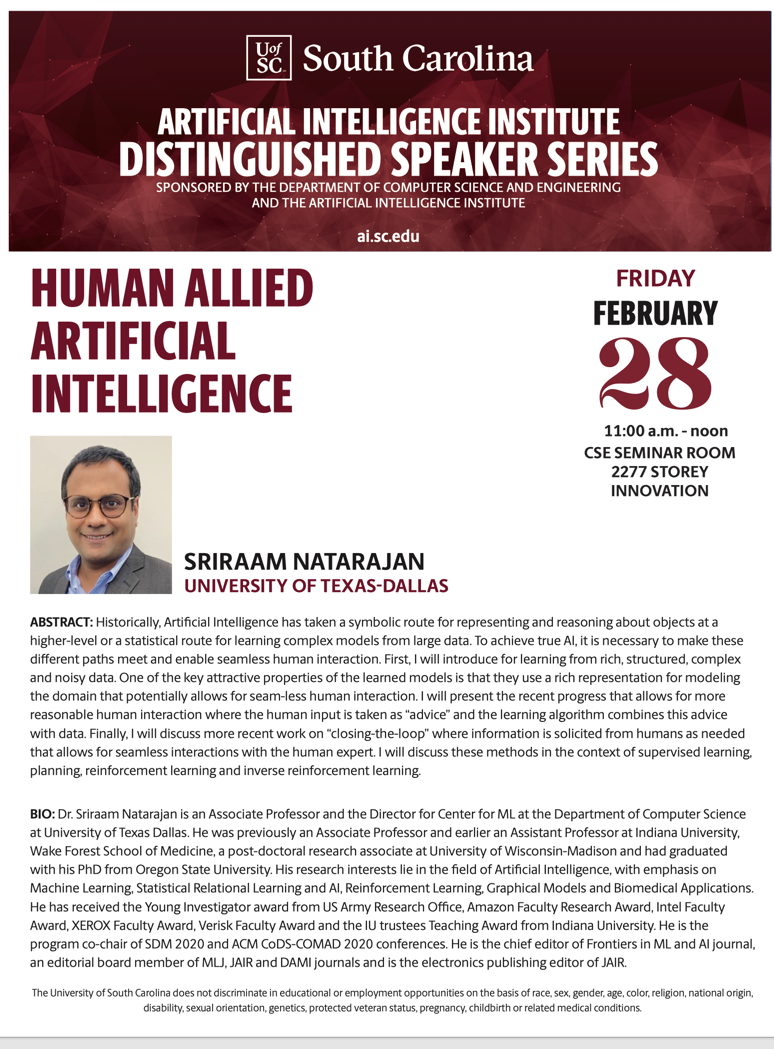ACM@UofSC
- 29 views
Thursday, September 17, 2020 - 07:00 pm
Discord
I wanted to invite everyone down to our Association for Computing Machinery at the University of South Carolina. We are a student organization that meets weekly to discuss a wide range of topics, usually presented by students accompanied with pizza. This semester we may be unable to have our pizza, but we are continuing to have our talks every Thursday at 7. We enjoy talks from anything related to Computers or Computer Science, and we take talk proposals from all students who have an interest in any related topic. Always feel free to join us, we are currently on Discord for the semester. Our organization is also well suited for networking and in my opinion a great skill to have is to be able to present on a topic to any audience. ACM gives a great platform for developing those important skills. Our next two talks are a great example of the wide range of topics and people that give talks at our organization. On the 17th Charles Daniels, a PhD student here will be giving a talk, Introduction to Python. Next week, the 24th, Dalton Craven will be giving a talk, Interactive React, which will be an interactive activity that gives the basics to writing web applications that are pretty and responsive.
Throughout the semester we have many other events, one of my personal favorites is ICPC. It is the ACM Intercollegiate Programming Competition, it is a programming competition where we travel to Charleston and compete with other schools such as Clemson, College of Charleston, University of Central Florida, and otherwise enjoy a day traveling and competing. One other is our semesterly codeathon, where we have an in-house programming competition for prizes and slots for our ICPC team. Lastly we have events such as Open Source Columbia, and Open Source 101, where we travel to conventions and are generally great networking opportunities, as well as places to learn the newest and shiniest materials in the field. Hope to see everyone this semester!
————————————————————————————
Introduction to Python
Charles Daniels
17 September 2020
7:00 PM EDT (UTC-04)
Discord
————————————————————————————
Interactive React
Dalton Craven
24 September 2020
7:00 PM EDT (UTC-04)
Discord
————————————————————————————
Below are some of our important forums.
Discord: http://discord.gg/uRRAmYD
ACM Website: https://acm.cse.sc.edu
